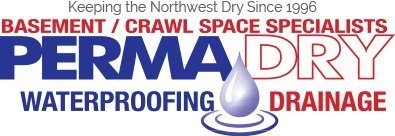Perma Dry Waterproofing Blog
Do you have water in your basement or crawl space? Is there mold or mildew affecting the air quality in your home? It's likely you need basement or crawl space drainage. Perma Dry offers a wide variety of common sense solutions to your wet basement or crawl space problems. Learn more here in our blog. When you're ready, give us a call and schedule an appointment.
Call for Inquiry
Send An Email
Get A Free Quote

Understanding Hydrostatic Pressure and Its Effects on Foundations
Hydrostatic pressure is an important factor to consider when it comes to understanding the stability and integrity of foundations. It refers to the pressure exerted by a fluid at equilibrium due to the force of gravity acting on it. This pressure can have significant effects on the foundation of a structure, and it is essential to understand its mechanisms and potential consequences.
What Causes Hydrostatic Pressure?
Hydrostatic pressure is primarily caused by the presence of water or other fluids around and underneath a foundation. When the soil becomes saturated with water, it creates a hydrostatic force against the foundation walls. The pressure increases as water builds up due to rainfall, poor drainage systems, or high water tables. As a result, the water exerts this force against the foundation, leading to potential issues.
The accumulation of water around a foundation can occur due to various reasons. Improper grading of the surrounding landscape, inadequate waterproofing measures, faulty gutters and downspouts, and leaks in water supply lines or drainage systems can all contribute to the buildup of hydrostatic pressure.
The Effects of Hydrostatic Pressure on Foundations
Excessive hydrostatic pressure can lead to various problems for foundations. Understanding these effects can help homeowners and building professionals recognize the signs early on and take appropriate action to prevent further damage.
1. Foundation Cracks
One of the most common effects of hydrostatic pressure is the formation of cracks in the foundation walls. The constant pressure from the water can weaken the structural integrity of the walls, leading to cracks and gaps. These cracks can allow water to seep into the basement or crawl space, further exacerbating the problem.
If left unaddressed, these cracks can worsen over time and compromise the stability of the entire foundation. They can also provide an entry point for pests and insects, causing further damage to the property.
2. Bowing or Leaning Walls
Another consequence of hydrostatic pressure is the bowing or leaning of foundation walls. As the water pushes against the walls, it can cause them to gradually shift or tilt inward. This movement weakens the structural integrity of the foundation and can lead to additional issues, such as basement flooding or the collapse of the walls.
Identifying signs of bowing or leaning walls, such as visible cracks, doors or windows that stick, or gaps between the walls and ceilings, is crucial. Taking prompt action to address these problems can help prevent further damage and costly repairs.
3. Foundation Settlement
Hydrostatic pressure can also contribute to foundation settlement. As the excessive water exerts pressure against the underlying soil, it can cause the soil to shift and settle unevenly. This uneven settling can lead to the sinking or shifting of the foundation, resulting in structural instability and potential damage to the entire building.
Signs of foundation settlement include uneven floors, cracked walls or ceilings, and doors and windows that do not close properly. It is important to address these issues as soon as they are noticed to prevent further complications.
Preventing and Mitigating Hydrostatic Pressure
It is crucial to implement measures to prevent and mitigate hydrostatic pressure to protect the foundation of a structure. By understanding the potential causes and taking preventive actions, homeowners and building professionals can avoid costly repairs and maintain the integrity of the foundation.
1. Proper Grading and Drainage
Ensuring proper grading of the landscape around the property is essential. The ground should slope away from the foundation to allow water to flow away from the structure. This helps prevent water from accumulating around the foundation and reduces the risk of hydrostatic pressure.
In addition to proper grading, installing effective drainage systems such as gutters, downspouts, and French drains can help redirect water away from the foundation. Regular maintenance of these systems is essential to ensure they are functioning correctly and preventing water buildup.
2. Waterproofing Techniques
Applying waterproofing techniques to the foundation walls is an effective way to prevent water intrusion and reduce the risk of hydrostatic pressure. Waterproof coatings, sealants, and membranes can help create a barrier against water, keeping the foundation dry and protected.
Proper installation of a sump pump system can also help manage any water that does accumulate around the foundation. A sump pump will remove excess water from the area, reducing the risk of hydrostatic pressure and potential damage.
3. Professional Foundation Repair
If the signs of hydrostatic pressure damage are already present, it is essential to consult with a professional foundation repair company. These experts can assess the extent of the damage and recommend appropriate solutions to restore the integrity of the foundation.
Repair methods may include installing wall anchors or braces to stabilize bowing or leaning walls, injecting epoxy or polyurethane resins to seal foundation cracks, or implementing underpinning techniques to address foundation settlement.
Conclusion
Understanding hydrostatic pressure and its effects on foundations is crucial for homeowners and building professionals. By recognizing the potential consequences of excessive pressure, implementing preventive measures, and seeking professional assistance when needed, individuals can protect their properties, ensure foundation stability, and avoid costly repairs in the long run.
If you suspect hydrostatic pressure issues in your foundation, it is advisable to consult with a reputable foundation repair company like Permady Waterproofing. They have years of experience in providing effective solutions to address hydrostatic pressure and ensure the structural integrity of foundations. Visit Permady Waterproofing website for more information and expert assistance.

Waterproofing Solutions for Older Homes
Waterproofing is crucial for maintaining the integrity and longevity of any home, but it becomes even more important for older homes. As houses age, they are more prone to issues such as cracks, leaks, and moisture infiltration. If left untreated, these issues can lead to significant damage and expensive repairs. Thankfully, there are various waterproofing solutions available that can help protect older homes from water damage and ensure a dry, safe living environment for homeowners.
The Importance of Waterproofing Older Homes
Older homes often have different construction techniques and materials compared to newer buildings. These differences can make them more susceptible to water-related issues. Here are some reasons why waterproofing older homes is essential:
1. Foundation Vulnerability: Many older homes have foundations made of brick or stone, which can deteriorate over time. Water infiltration into these foundations can cause them to weaken and destabilize, leading to structural problems.
2. Basement and Crawl Space Concerns: Older homes are more likely to have basements or crawl spaces, which are at a higher risk of water intrusion due to their location below ground level. Poor waterproofing in these areas can result in mold and mildew growth, musty odors, and even damage to stored items.
3. Aging Plumbing Systems: Older homes may still have outdated plumbing systems that are more prone to leaks or bursts. Water leaks can cause extensive damage to walls, floors, and ceilings, compromising the overall integrity of the structure.
Common Waterproofing Solutions for Older Homes
Thankfully, there are several effective waterproofing solutions available for older homes. These solutions can address specific problem areas and provide long-term protection against water damage. Here are some common waterproofing techniques:
1. Exterior Waterproofing: This method involves digging around the foundation to install a waterproof membrane or coating on the exterior walls. It helps prevent water from seeping into the foundation and directs it away from the house. Exterior waterproofing is an effective solution for older homes with foundation leaks or cracks.
2. Interior Waterproofing: Interior waterproofing involves treating the inside of the basement or crawl space walls with a waterproof sealant. This method helps prevent water from entering the living space, protects against mold and mildew growth, and improves air quality. Interior waterproofing is a less invasive and costly solution compared to exterior waterproofing.
3. French Drains: French drains are an effective solution for homes with basement or crawl space water issues. A French drain consists of a perforated pipe installed along the perimeter of the foundation. It collects water and directs it away from the house, preventing water from accumulating around the foundation.
4. Sump Pump Installation: A sump pump is a device that helps remove water that has collected in the basement or crawl space. It is typically installed in a sump pit and automatically pumps out water when it reaches a certain level. Sump pumps are vital for older homes located in areas prone to flooding or with high groundwater levels.
5. Roof and Gutter Maintenance: Adequate roof and gutter maintenance play a crucial role in waterproofing older homes. Regular inspections, cleaning, and repairs ensure that water is effectively channeled away from the house, preventing issues such as roof leaks, basement flooding, or foundation damage.
6. Foundation Repair: In cases where the foundation of an older home has significant cracks or damage, it is essential to address these issues before implementing waterproofing measures. Foundation repair may involve stabilizing the foundation, filling in cracks, or reinforcing weak areas to prevent water infiltration.
Professional Waterproofing Assistance
While some homeowners may attempt DIY waterproofing projects, it is often best to seek professional assistance. Waterproofing older homes requires expertise, as each house has unique characteristics and challenges. Professional waterproofing contractors have the necessary knowledge, tools, and experience to assess the specific needs of an older home and recommend the most appropriate solutions.
PermaDry Waterproofing is a trusted waterproofing company specializing in solutions for older homes. They offer a wide range of services, including exterior and interior waterproofing, foundation repair, and sump pump installation. Their team of experts can provide a thorough assessment of your home’s waterproofing needs and recommend tailored solutions to keep your older home dry and protected.
Conclusion
Waterproofing older homes is essential for preventing water damage, preserving the structural integrity, and ensuring a healthy living environment. By implementing the right waterproofing solutions, homeowners can protect their investment and enjoy the comfort and peace of mind that comes with a dry and secure home. Whether through exterior or interior waterproofing, French drain installation, or professional assistance from companies like PermaDry Waterproofing, homeowners can safeguard their older homes for years to come.

DIY vs. Professional Waterproofing: Pros and Cons
Waterproofing is an essential aspect of maintaining a healthy and functional home. It helps protect the structural integrity of the building and prevents damage caused by water infiltration. When it comes to waterproofing, you have two main options: DIY or hiring a professional waterproofing company. Both options have their own set of pros and cons, and it’s crucial to weigh them before making a decision.
DIY Waterproofing
DIY waterproofing involves taking on the task yourself, using various products and techniques available in the market. This option appeals to budget-conscious homeowners who prefer to save money and tackle the project independently. Let’s take a closer look at the pros and cons of DIY waterproofing.
Pros
1. Cost: One of the significant advantages of DIY waterproofing is cost-effectiveness. By doing the work yourself, you can potentially save a significant amount of money that would have been spent on hiring professionals. Waterproofing products, such as sealants and coatings, are readily available at local home improvement stores at affordable prices.
2. Flexibility: DIY waterproofing allows you to work at your own pace and schedule. You have the freedom to choose when and how you want to tackle the project, without relying on the availability of a professional contractor. This flexibility can be ideal for individuals who have the time and dedication to complete the task efficiently.
3. Learning Experience: Taking on a waterproofing project yourself can be a great learning experience. It gives you an opportunity to understand your home’s vulnerabilities and the necessary steps to protect it from water damage. You can gain valuable knowledge about the different waterproofing techniques and products available, which can be beneficial for future maintenance or repairs.
Cons
1. Lack of Expertise: One of the main drawbacks of DIY waterproofing is the lack of professional expertise. Waterproofing requires specific skills and knowledge to identify potential issues and implement the most effective solutions. Without proper training and experience, there’s a higher risk of making errors or overlooking critical factors that could compromise the effectiveness of the waterproofing.
2. Time and Effort: Waterproofing can be a time-consuming and labor-intensive process, especially for larger homes or complex projects. As a DIYer, you need to allocate a significant amount of time and effort to properly prepare the surfaces, apply the waterproofing products, and ensure a thorough and durable finish. This can be challenging for individuals with busy schedules or limited physical capabilities.
3. Limited Warranty: When you hire a professional waterproofing company, you usually get the benefit of a warranty on their work. In contrast, when you opt for DIY waterproofing, warranties may not be available for the products you use or the work you perform. This lack of warranty can be a significant disadvantage, as it leaves you solely responsible for any future issues or damages that may occur.
Professional Waterproofing
Professional waterproofing involves hiring licensed and experienced contractors or waterproofing companies to handle the project. While it may come at a higher cost, professional waterproofing offers several advantages that are worth considering.
Pros
1. Expertise and Experience: Waterproofing professionals have the necessary expertise and experience to assess your specific waterproofing needs accurately. They can identify potential problem areas, recommend the most appropriate solutions, and implement them efficiently and effectively. Their knowledge and skills ensure that the waterproofing is done correctly the first time, reducing the risk of future damage.
2. Quality Assurance: Hiring professionals for waterproofing provides a level of assurance in terms of quality and longevity. Reputable waterproofing companies use high-quality materials and industry-standard techniques to ensure a durable and effective waterproofing solution. They also typically provide warranties on their work, giving you peace of mind and protection against any unexpected issues.
3. Time and Convenience: Waterproofing professionals have the expertise and resources to complete the project in a timely manner. They are equipped with the necessary equipment, tools, and manpower to efficiently carry out the waterproofing work. Hiring professionals saves you the hassle and effort of managing the project yourself, allowing you to focus on other aspects of home maintenance or renovation.
Cons
1. Cost: Professional waterproofing services can be more expensive compared to DIY. The cost includes not only the labor and expertise but also the high-quality materials used. However, it’s essential to consider the long-term benefits and potential savings in terms of preventing costly water damage in the future.
2. Dependence on Contractors: When you hire professionals for waterproofing, you are dependent on their availability and schedule. There may be a waiting period before they can begin the work, particularly during busy seasons. This can be inconvenient if you require immediate attention or have a strict timeline for the project.
3. Lack of Control: Entrusting the waterproofing task to professionals means relinquishing some control over the process. While reputable contractors will consult and communicate with you throughout the project, there may still be a sense of uncertainty or unfamiliarity with the precise methods and materials they use.
Ultimately, the decision between DIY waterproofing and hiring professionals depends on several factors, including your budget, time availability, and confidence in your abilities. If you have the necessary skills, knowledge, and resources, and the project is relatively small and straightforward, DIY waterproofing can be a cost-effective option. However, for larger or complex projects, or if you lack the expertise, it’s advisable to invest in professional waterproofing for peace of mind and long-term protection.
When considering professional waterproofing services, it’s crucial to research and choose a reputable contractor or company. Look for qualifications, licenses, and insurance coverage. A trusted choice could be Perma Dry Waterproofing, a leading waterproofing company with a proven track record of excellence and customer satisfaction. With their expertise and experience, they can provide you with a durable and effective waterproofing solution that will protect your home for years to come.

How to Prevent Mold and Mildew in Your Basement
Are you tired of dealing with mold and mildew in your basement? It’s a common problem that many homeowners face, but the good news is that there are steps you can take to prevent it. In this article, we will discuss effective strategies to keep your basement free from mold and mildew, ensuring a clean and healthy living space for you and your family.
1. Ensure Proper Ventilation
One of the most important steps in preventing mold and mildew growth in your basement is to ensure proper ventilation. Basements are naturally prone to high humidity levels, which create an ideal environment for mold and mildew to thrive.
To improve ventilation in your basement, consider installing or improving existing windows to allow for fresh air to circulate. You can also use fans or dehumidifiers to help reduce moisture levels. Regularly opening windows and doors to allow for air exchange can also be beneficial.
Additionally, inspect your HVAC system to ensure proper airflow throughout your home, including the basement. Regularly changing air filters and scheduling professional maintenance can help optimize ventilation and reduce humidity.
2. Control Moisture Levels
The key to preventing mold and mildew growth is controlling moisture levels in your basement. This can be achieved by taking several measures:
- Repair any leaks or water damage immediately. This includes addressing issues with plumbing, foundation cracks, or inadequate exterior drainage.
- Install a basement waterproofing system to prevent water seepage. This can include techniques such as installing a sump pump, applying waterproof coatings on walls, and sealing gaps and cracks.
- Use moisture barriers or insulation materials on basement walls to prevent condensation.
- Regularly clean and maintain gutters and downspouts to ensure proper water drainage away from the foundation of your home.
By taking these steps, you can significantly reduce moisture and create an environment that is inhospitable to mold and mildew growth.
3. Monitor Humidity Levels
Keeping a close eye on humidity levels in your basement is crucial in mold prevention. Ideally, the humidity levels should be kept below 50%, as anything higher creates a favorable environment for mold and mildew to thrive.
You can monitor humidity using a hygrometer, which is an inexpensive device that measures the moisture content in the air. If you notice humidity levels consistently above 50%, consider using a dehumidifier to help remove excess moisture from the air. Empty the collected water regularly and clean or replace the dehumidifier filters as recommended by the manufacturer.
Remember to keep the basement windows and doors closed during humid weather conditions, as it can introduce excess moisture into the space.
4. Keep Basements Clean and Organized
Mold and mildew thrive in dark, damp, and cluttered environments. By keeping your basement clean and well-organized, you can prevent mold growth and make it easier to spot any potential issues.
Regularly clean your basement, sweeping up dust and debris, and wiping down surfaces with an appropriate cleaning solution. Pay extra attention to areas that are prone to moisture, such as around windows, pipes, and near the floor. Consider using mold-resistant paint on walls and surfaces for added protection.
Organize your belongings in a way that allows for proper airflow and minimizes the chance of trapping moisture. Avoid storing cardboard boxes directly on the floor and use plastic bins or shelves instead. This will prevent moisture from being absorbed into your belongings and potentially causing mold growth.
5. Seek Professional Assistance
If you’ve followed these steps and are still struggling with mold and mildew in your basement, it may be time to seek professional assistance. A trusted basement waterproofing company, such as Perma-Dry Waterproofing & Drainage, can assess your specific situation and provide tailored solutions to prevent mold and moisture issues.
A professional assessment will help identify any underlying problems, such as foundation issues or inadequate waterproofing, and offer long-term solutions to keep your basement dry and mold-free.
Remember, preventing mold and mildew in your basement is essential not only for the structural integrity of your home but also for the health and well-being of your family. By implementing these preventative measures and seeking professional help when needed, you can ensure a clean and healthy basement for years to come.
Sources:
Perma-Dry Waterproofing & Drainage

Foundation Repair 101: What Homeowners Need to Know
Foundation repair is a critical aspect of homeownership that often goes overlooked until serious problems arise. The foundation of your home is the base upon which the entire structure rests, so any issues with the foundation can have detrimental effects on the structural integrity of your house.
The Importance of a Solid Foundation
A solid foundation is essential for maintaining the stability and safety of your home. It provides support for the entire structure, ensuring that it can withstand the weight and pressures exerted upon it over time. A compromised foundation can lead to a variety of problems, including uneven floors, cracks in walls and ceilings, sticking doors and windows, and even structural collapse.
That is why it’s crucial for homeowners to understand the basics of foundation repair and how to identify potential issues early on. By having a basic understanding of what to look for and when to seek professional help, you can proactively address foundation problems and potentially save yourself from costly repairs down the line.
Common Signs of Foundation Problems
Foundation issues can manifest in various ways, and it’s important to be aware of the common signs that may indicate a problem.
- Cracks: One of the most obvious signs of foundation problems is the presence of cracks. Look out for cracks in the foundation itself, as well as cracks in the walls, floors, and ceilings of your home. Horizontal cracks, stair-step cracks, or wider cracks may indicate a more serious issue.
- Uneven Floors: If you notice that your floors are uneven or sloping, it could be an indication of a compromised foundation. Floors that feel soft or bounce when you walk on them should also be a cause for concern.
- Sticking Doors and Windows: Difficulty opening or closing doors and windows is another common symptom of foundation problems. If your doors or windows no longer align properly or require extra force to operate, it may be due to a shifting foundation.
- Water Damage: Excessive moisture or water damage near the foundation can weaken the soil and cause foundation issues. Keep an eye out for damp spots, standing water, or pooling around your home’s perimeter.
- Foundation Upheaval: Foundation upheaval occurs when a section of the foundation moves upward. This can be identified by cracks that are wider at the top, doors that suddenly no longer close properly, or gaps between the walls and the floor.
If you notice any of these signs in your home, it’s essential to take prompt action and consult with a professional foundation repair company. A qualified foundation repair specialist can assess the problem, conduct necessary repairs, and provide you with advice on preventing future issues.
The Causes of Foundation Problems
Understanding the causes of foundation problems can help homeowners take preventive measures and maintain a solid foundation. Some of the common causes include:
- Soil Issues: Expansive clay soils, poor soil compaction, and soil erosion are common culprits behind foundation problems. Expansive clay soils, for example, can swell when wet and shrink when dry, exerting pressure on the foundation.
- Water Damage: Excessive moisture from improper drainage, leaky pipes, or inadequate grading can lead to foundation damage. Water can seep into the soil, causing it to expand and contract, destabilizing the foundation.
- Tree Roots: The roots of large trees close to the foundation can extract moisture from the soil, leading to soil shrinkage and settling of the foundation.
- Poor Construction: Substandard construction practices or using low-quality materials during the initial construction of the home can contribute to foundation problems over time.
If you suspect any of these issues may be affecting your foundation, it’s best to consult with a professional foundation repair expert who can identify the root cause and recommend appropriate solutions.
The Role of Professional Foundation Repair
While basic maintenance and monitoring can help prevent some issues, it’s crucial to remember that foundation repair is a specialized job that requires professional expertise and equipment. Attempting DIY repairs or relying on temporary fixes can often do more harm than good.
A professional foundation repair company will assess the extent of the damage, identify the underlying causes, and recommend the most appropriate course of action. They have the knowledge and experience to tackle foundation repairs effectively and ensure the long-term stability of your home.
Professional solutions may include:
- Foundation Underpinning: This involves strengthening the foundation by installing additional support, such as helical piers or steel push piers, deep into the ground.
- Foundation Stabilization: Various methods can be used to stabilize shifting foundations, such as installing wall anchors, carbon fiber strips, or mudjacking to level and support the foundation.
- Waterproofing: Addressing moisture issues, improving drainage, and installing waterproofing measures can help prevent further damage to the foundation.
By investing in professional foundation repair, you can have peace of mind knowing that your home is protected and that any existing issues are properly addressed.
In conclusion, having a solid foundation is crucial for the structural integrity and safety of your home. Understanding the signs of foundation problems, the underlying causes, and the importance of professional repairs can help homeowners take swift and appropriate action. Remember, prevention is always better than cure, so regular maintenance and early intervention are key when it comes to foundation health.
If you notice any signs of foundation issues in your home, don’t hesitate to reach out to a reputable foundation repair company like Permadry Waterproofing for a professional inspection and expert advice.

Why Sump Pumps Are Essential for Basement Waterproofing
Basement waterproofing is an essential aspect of maintaining a dry and healthy home. A key component in this process is the installation of a sump pump. In this article, we will explore why sump pumps are vital for basement waterproofing and how they help protect your home from water damage.
What is a Sump Pump?
A sump pump is a device that is typically installed in the lowest part of a basement or crawl space. Its primary function is to help prevent water from accumulating and flooding the area. The sump pump is designed to collect water that enters the basement or crawl space and then pump it out and away from the foundation of the house.
There are two main types of sump pumps: submersible pumps and pedestal pumps. Submersible pumps are installed inside a pit or sump basin, while pedestal pumps are placed above the pit. Both types are effective in removing excess water, but submersible pumps are more commonly used due to their efficiency and ability to handle larger volumes of water.
Why are Sump Pumps Important for Basement Waterproofing?
1. Prevents Flooding: The primary purpose of a sump pump is to prevent flooding in the basement or crawl space. By actively removing water from the area, it helps to keep the space dry and prevents water damage to the structure and belongings stored within.
2. Protects Against Water Damage: Excess moisture and water in the basement can lead to various issues such as mold growth, structural damage, and damage to furniture and valuables. By installing a sump pump, you are taking a proactive step in protecting your property against these potential damages.
3. Reduces Humidity Levels: Excessive moisture and humidity in the basement can create an ideal environment for mold and mildew to thrive. These can pose serious health risks to the occupants of the house. A sump pump helps in keeping the basement dry, reducing humidity levels, and preventing the growth of mold and mildew.
4. Prevents Foundation Damage: When water accumulates around the foundation of a house, it can lead to foundation damage. The constant pressure from the water can cause cracks and compromise the structural integrity of the foundation. By removing water from the area, a sump pump helps in preventing such damage and ensures the long-term stability of the house.
5. Increases Property Value: Having a properly functioning sump pump is considered a valuable asset when it comes to buying or selling a home. Prospective buyers are often attracted to properties with basement waterproofing systems in place, as it gives them peace of mind knowing that the basement is protected against water damage.
6. Provides Peace of Mind: One of the greatest benefits of having a sump pump is the peace of mind it provides. Knowing that your basement is protected against water damage, floods, and mold growth allows you to enjoy a dry and safe living space.
Installation and maintenance of a sump pump is a job best left to professionals. Consulting a reputable basement waterproofing company like PermaDry Waterproofing (hyperlink) can help ensure that the pump is installed correctly and that it is functioning properly. Regular maintenance and inspection of the pump are also crucial to its effectiveness.
In conclusion, sump pumps are an essential component of basement waterproofing systems. They play a vital role in preventing flooding, protecting against water damage, reducing humidity levels, preventing foundation damage, increasing property value, and providing peace of mind. If you want to safeguard your basement and home from water-related issues, consider installing a sump pump.
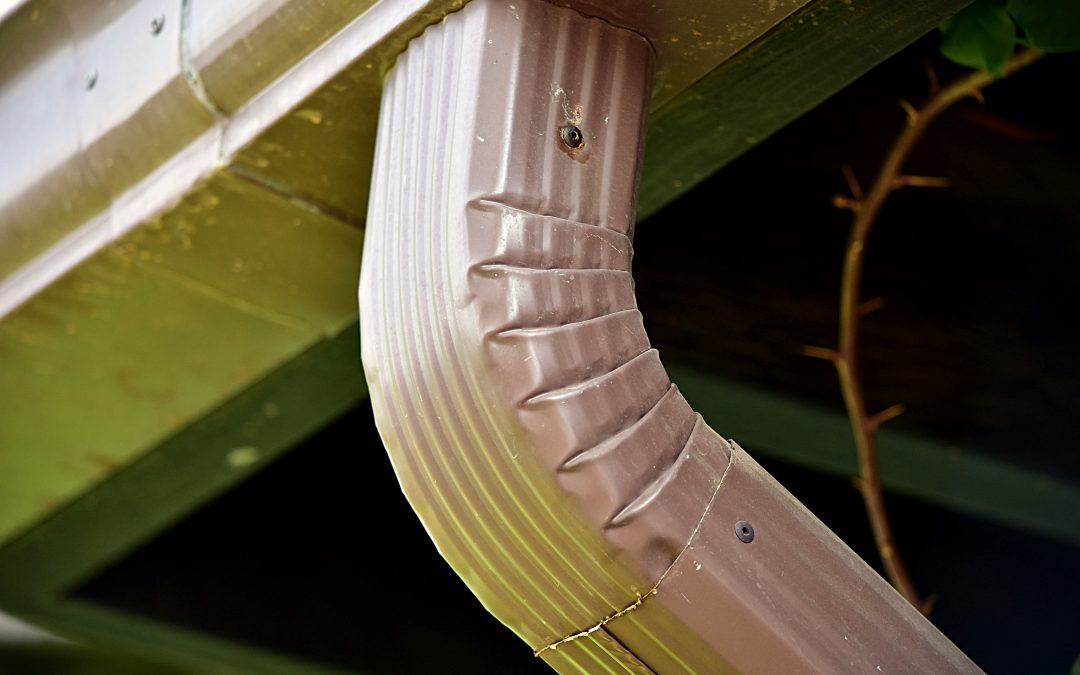
Gutters and Downspouts: Your Home’s First Line of Defense Against Water Damage
When it comes to maintaining a home, there are many aspects to consider. From ensuring the interior is clean and well-maintained to keeping the exterior in top shape, every detail matters. One often overlooked but essential element of a home is the gutter and downspout system.
The Importance of Gutters and Downspouts
Gutters and downspouts play a vital role in protecting your home from water damage. By redirecting rainwater away from your foundation, they prevent costly issues such as basement flooding and foundation damage.
Preventing Water Damage
One of the primary functions of gutters and downspouts is to channel water away from your home. Without proper drainage, rainwater can collect near the foundation, leading to instability and potential structural damage. By directing water away from the foundation, gutters and downspouts prevent water from seeping into your basement and causing flooding.
Furthermore, gutters and downspouts help preserve the integrity of your siding. Without them, rainwater can splash against the exterior walls, causing moisture damage and rot. This not only compromises the aesthetics of your home but can also result in expensive repairs.
Enhancing Home Aesthetics and Curb Appeal
Gutters and downspouts not only serve a functional purpose but also contribute to the overall aesthetics of your home. With various materials and styles available, you can choose gutters and downspouts that seamlessly blend with your home’s exterior, enhancing its curb appeal.
Exterior Maintenance and Preventing Mold and Mildew Growth
Maintaining the exterior of your home is crucial for preventing the growth of mold and mildew. Clogged gutters can become a breeding ground for these harmful substances, as stagnant water accumulates and creates a moist environment. By regularly cleaning and maintaining your gutters and downspouts, you can prevent mold and mildew growth, keeping your home safe and healthy.
Common Issues and Problems
One of the most common problems associated with gutters and downspouts is clogging. Leaves, debris, and other materials can accumulate and block the flow of water, compromising their function. This can lead to overflowing gutters, which may result in water damage to your home’s foundation and basement.
Improper installation can also cause issues with gutters and downspouts. If they are not correctly aligned or sloped, water may not flow properly, leading to pooling and potential damage. It is essential to ensure proper installation to maximize the effectiveness of your gutter system.
Proper Maintenance and Upkeep
To prevent problems with your gutters and downspouts, regular maintenance and upkeep are necessary. This includes cleaning out debris and leaves, inspecting for damage, and making necessary repairs.
Experts recommend cleaning gutters at least twice a year, in the spring and fall, to remove any debris that may have accumulated. However, in areas with heavy foliage, more frequent cleaning may be required.
Inspection and Repair
Aside from cleaning, it is crucial to regularly inspect your gutters and downspouts for any signs of damage or wear. This includes checking for leaks, loose fasteners, or sagging sections. Identifying and fixing these issues promptly can prevent further damage.
While some maintenance tasks can be done by homeowners, hiring professional services is recommended for thorough cleaning and repairs. Gutter cleaning services have the necessary expertise and equipment to ensure your gutters are cleaned and maintained properly.
Consulting with Roofing Experts
When facing significant issues with your gutters and downspouts or considering a replacement, consulting with roofing experts is beneficial. They can assess your home’s specific needs and recommend the right gutter system for your property.
Choosing the Right Gutters and Downspouts
When it comes to selecting gutters and downspouts, several factors should be considered. Materials, durability, gutter sizes, styles, and downspout options all play a role in determining the most suitable system for your home.
Anchortext hyperlink: Basement Waterproofing
Materials commonly used for gutters and downspouts include aluminum, copper, and vinyl. Each material has its advantages and durability factors. Aluminum gutters are lightweight and resistant to rust, making them a popular choice. Copper gutters offer a distinctive aesthetic appeal and excellent longevity. Vinyl gutters are cost-effective and require minimal maintenance.
Gutter sizes and styles also impact the effectiveness of your gutter system. Standard gutters are typically five inches wide, while oversized gutters measure six inches wide. Based on the climate and rainfall patterns in your area, the size of your gutters may need to be adjusted to handle heavier rainfall.
K-style and half-round gutters are the two primary styles available. K-style gutters have a flat bottom and a decorative shape resembling crown molding, making them blend well with modern homes. Half-round gutters have a semicircular shape and are often associated with more traditional architectural styles.
Downspouts are crucial for directing water from the gutters to the ground. The size and number of downspouts should be determined based on the amount of rainfall your area receives. Additionally, deciding between hidden and exposed downspouts is a matter of personal preference and the overall aesthetic of your home.
DIY vs. Professional Installation
When it comes to installing gutters and downspouts, the choice between DIY or professional installation depends on various factors.
If you have the necessary skill level and access to the required tools and equipment, DIY installation can be a cost-effective option. However, it is essential to consider the complexity of the installation process and the potential risks involved.
Professional installation offers several benefits. Roofing experts have the expertise and experience to ensure proper installation and alignment, maximizing the functionality of your gutter system. Furthermore, hiring professionals saves you time and effort, allowing you to focus on other aspects of maintaining your home.
Additionally, professional installation often comes with warranty and insurance coverage, providing peace of mind in case of any issues or damage.
Conclusion
Gutters and downspouts are crucial for protecting your home from water damage, preventing basement flooding, preserving your siding, and enhancing curb appeal. Regular cleaning, proper maintenance, and occasional repairs are necessary to keep your gutter system functioning optimally.
When selecting gutters and downspouts, consider factors such as materials, durability, sizes, and styles to meet your home’s specific needs. Whether you choose to install them yourself or hire professionals, ensuring a properly functioning gutter and downspout system is essential for the overall well-being and longevity of your home.
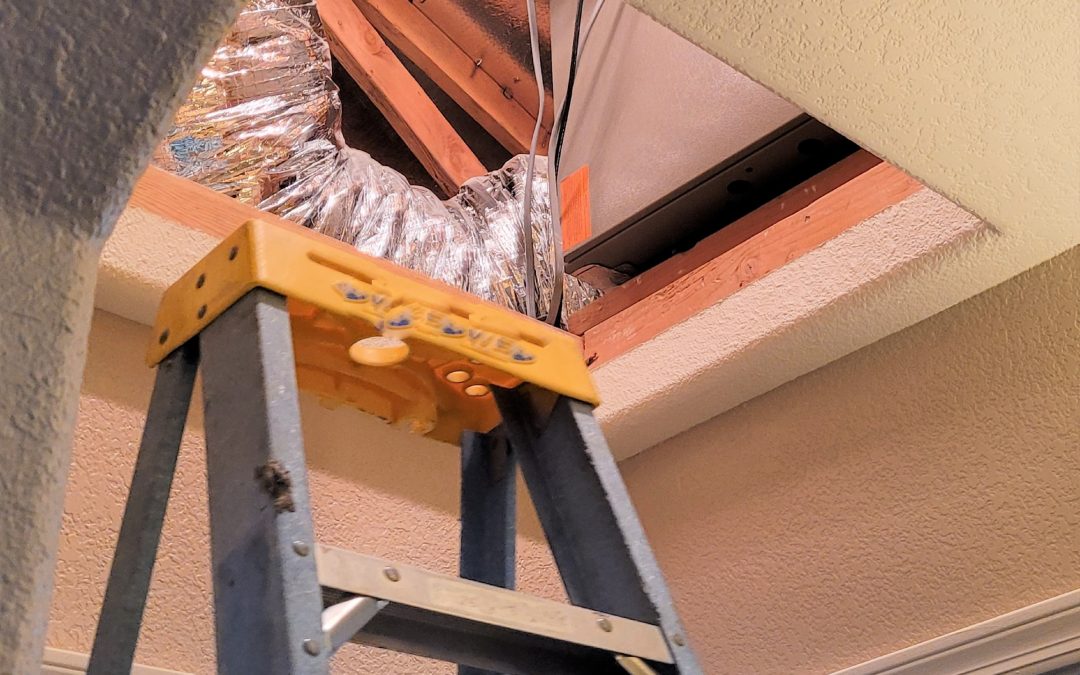
DIY vs. Professional Crawl Space Repairs: What You Need to Know
Understanding Crawl Space Repairs
Importance of Crawl Space Maintenance
When it comes to maintaining a home, the crawl space is often overlooked. However, it plays a crucial role in the overall health and stability of the house. Neglecting crawl space maintenance can lead to significant issues, including structural damage and health hazards for the occupants.
< p > One < a href = “https://www.watershieldseattle.com/crawl-space-service/”> vital aspect of crawl space maintenance is managing the moisture levels. Excessive moisture can seep through the foundation and walls, leading to mold and mildew growth, as well as attracting pests. These problems not only compromise the structural integrity of the home but also pose health risks for the inhabitants. < / p >
Common Crawl Space Problems
There are several common issues that homeowners may encounter with their crawl spaces. These issues require timely attention and repairs to prevent further damage to the property.
- Moisture and water issues: Crawl spaces are prone to water intrusion and excessive moisture, especially if they are not adequately sealed or if the drainage systems are faulty. This can result in dampness, mold growth, and even water damage to the foundation and wooden structures.
- Mold and mildew growth: Moisture problems in the crawl space can create an ideal environment for mold and mildew to flourish. These fungi not only cause structural damage but also release spores that can affect indoor air quality and contribute to respiratory issues.
- Pest infestation: Crawl spaces that are damp and neglected can attract pests such as rodents, insects, and termites. These pests can cause extensive damage to the wooden structures, insulation, and even electrical wiring in the crawl space.
- Insulation and ventilation problems: Inadequate insulation and poor ventilation can result in energy inefficiency and temperature imbalances. This can lead to higher utility bills and discomfort in the living areas above the crawl space.
DIY Crawl Space Repairs
Advantages of DIY Approach
Taking a DIY approach to crawl space repairs can be a cost-effective and fulfilling option for homeowners who are willing to invest time and effort into learning and performing the necessary tasks.
One of the key advantages of DIY crawl space repairs is the potential cost savings. By doing the work yourself, you can avoid paying for professional labor. Additionally, you have more control over the budget and can choose cost-effective materials and solutions.
Engaging in DIY repairs also provides you with valuable hands-on experience and a sense of personal satisfaction. It allows you to understand your home’s inner workings and develop skills that can be applied to future maintenance and repair projects.
Another advantage of the DIY approach is the flexibility it offers in terms of timing. You can work at your own pace and schedule the repairs according to your availability, without having to coordinate with external contractors.
Considerations Before Attempting DIY Repairs
Before embarking on DIY crawl space repairs, there are a few important factors to consider:
- Assessing the extent of damage: It is crucial to evaluate the severity of the crawl space problems and determine if you have the necessary skills and knowledge to address them effectively.
- Required skills and knowledge: Crawl space repairs may involve various tasks such as insulation installation, moisture control, and pest management. Make sure you have a good understanding of these processes or are willing to learn.
- Availability of tools and materials: Assess if you have the appropriate tools and materials required for the repairs. If not, factor in the cost and availability of these resources.
Step-by-step DIY Crawl Space Repair Guide
If you have decided to tackle crawl space repairs on your own, here is a step-by-step guide to help you get started:
- Inspecting for and addressing moisture problems
- Identifying and fixing leaks: Check for any water leaks or sources of moisture ingress and repair them promptly.
- Installing a vapor barrier: A vapor barrier is an essential component in preventing moisture from entering the crawl space. Install a high-quality barrier to provide a barrier between the ground and the crawl space.
- Improving drainage systems: Ensure that the crawl space has proper drainage to prevent the accumulation of water. This may involve installing or repairing gutters and downspouts.
- Addressing mold and mildew growth
- Cleaning and treating affected areas: Remove any visible mold or mildew growth using appropriate cleaning agents and techniques. Treat the surfaces with mold inhibitors to prevent regrowth.
- Improving ventilation: Enhance the airflow in the crawl space by installing vents or a mechanical ventilation system to inhibit the growth of mold and mildew.
- Dealing with pest infestations
- Identifying and eliminating pests: Determine the type of pests present in the crawl space and take necessary measures to eliminate them. This may include using traps, baits, or contacting pest control professionals.
- Sealing entry points: Inspect the crawl space for any openings or cracks that pests could use as entry points. Seal them off to prevent further infestations.
- Implementing preventive measures: Take preventive measures such as storing food properly, maintaining cleanliness, and sealing crawl space vents to keep pests at bay.
Professional Crawl Space Repairs
Benefits of Hiring Professional Services
While DIY repairs can be rewarding, there are situations where it is advisable to enlist the help of professionals who specialize in crawl space repairs. Hiring professionals offers several benefits:
- Expertise and experience: Professional repair services have the requisite knowledge, skills, and experience to identify and address crawl space problems efficiently and effectively.
- Time and energy savings: Repairing a crawl space can be a physically demanding and time-consuming task. By hiring professionals, you can save valuable time and energy that can be invested in other priorities.
- Long-lasting and comprehensive solutions: Professionals can provide long-lasting and comprehensive solutions that address not only the visible issues but also underlying problems that may lead to future complications.
Factors to Consider When Choosing a Professional
When selecting a professional crawl space repair service, consider the following factors:
- Valid licenses and certifications: Ensure that the company holds all the necessary licenses and certifications required by local authorities and professional bodies.
- Portfolio and customer reviews: Review the company’s portfolio of past projects and read customer reviews to gauge their expertise, quality of work, and customer satisfaction.
- Warranty and insurance coverage: Inquire about the warranties offered on their workmanship and products. Additionally, check if the company has proper insurance coverage to protect against any untoward incidents during the repairs.
Setting Realistic Expectations When Hiring Professionals
When engaging professional crawl space repair services, it is essential to have realistic expectations:
- Thorough inspection and diagnosis: Professionals should conduct a comprehensive inspection of the crawl space to identify all the underlying issues and provide an accurate diagnosis.
- Customized solutions based on individual needs: The repair solutions should be tailored to the specific needs and requirements of your crawl space to ensure optimal results.
- Timely completion of repairs: Professionals should provide a reasonable timeline for the completion of the repairs and strive to meet the given deadlines.
- Maintenance and follow-up services: Inquire if the company offers maintenance and follow-up services to ensure the long-term health and integrity of your crawl space.
Making the Right Choice
When it comes to crawl space repairs, every homeowner must weigh their options and make an informed decision based on their unique circumstances. Consider the following factors before deciding whether to pursue DIY repairs or hire professionals:
- Evaluating the scale and complexity of the repair: Assess the severity and extent of the crawl space problems you are facing. If the issues are extensive or require specialized expertise, professional help may be the best option.
- Assessing personal skills, time, and resources: Determine if you have the necessary skills, time availability, and resources to take on the repairs yourself. DIY repairs require dedication, patience, and a willingness to learn.
- Weighing the potential risks and benefits: Consider the risks associated with DIY repairs, such as potential mistakes or inadequate solutions. Compare these risks with the benefits of cost savings and personal satisfaction.
- Seeking professional advice and guidance: If uncertain, consult professionals for their expert opinion. They can evaluate your crawl space and provide guidance on the most suitable repair approach.
- Considering long-term implications and costs: Assess the long-term implications and costs associated with the chosen repair method. Professional repairs may require a higher upfront investment but can provide greater peace of mind and long-lasting results.
In summary, crawl space repairs are crucial for maintaining the overall health and stability of a home. Whether you opt for a DIY approach or professional assistance, it is essential to address issues such as moisture control, mold growth, pest infestations, and insulation problems. Consider your skills, available resources, and the complexity of the repairs before making your choice. When in doubt, seek expert advice. Ultimately, the goal is to ensure a safe and secure crawl space that contributes to a healthy living environment.
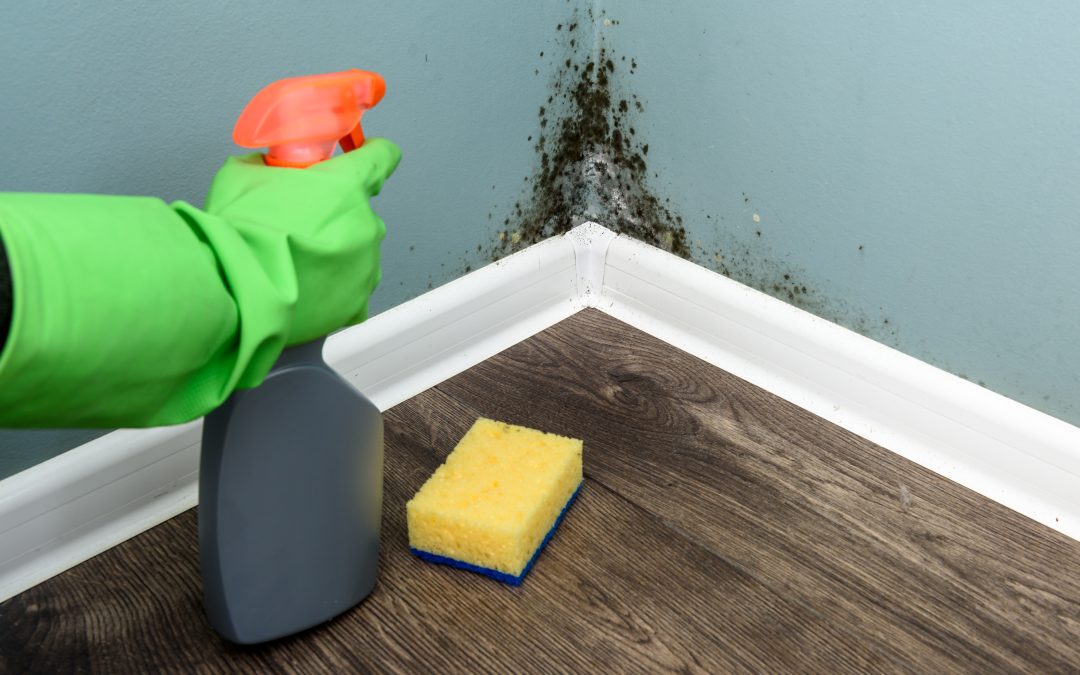
Long-Term Strategies for Keeping Your Basement Mold-Free
Hey y’all, gather ’round and let’s talk about a common issue that many Southern homeowners face: basement mold. It’s a pesky problem that can cause not only damage to your home but also potential health risks for you and your loved ones. But fret not, my dear readers, for today we will delve into the causes of basement mold and share some tips on how to prevent it from taking root in your humble abode.
I. Understanding the Causes of Basement Mold
Before we can tackle the issue head-on, we must first understand the root causes of basement mold. It often arises due to excess moisture, high humidity levels, and poor maintenance habits.
A. Excess Moisture in the Basement
One of the leading causes of basement mold is excess moisture, which can seep into your basement through various means. Poor ventilation, for instance, traps moisture and creates the perfect breeding ground for mold. Leaky pipes or plumbing issues can also contribute to excessive moisture, leading to mold growth. Additionally, water seepage through foundation cracks during heavy rain or flooding can introduce moisture, fostering mold development.
B. High Humidity Levels
Another culprit behind pesky basement mold is high humidity levels. Inadequate dehumidification within the basement can result in excessive moisture lingering in the air, providing the perfect environment for mold to thrive. The absence of moisture barriers such as vapor barriers can further contribute to increased humidity levels, exacerbating the mold problem.
C. Poor Maintenance and Cleanliness Habits
Lastly, neglecting regular cleaning and failing to maintain a clutter-free environment in your basement can also be a contributing factor to mold growth. Dust, debris, and organic matter provide the nourishment mold needs to flourish. Therefore, it is essential to establish good maintenance practices and keep your basement clean and organized.
II. Implementing Preventive Measures to Keep Basement Mold-Free
Now that we know the causes, let’s focus on the solutions. By implementing the following preventive measures, you can drastically reduce the risk of basement mold infiltrating your home.
A. Improve Ventilation and Airflow
Enhancing ventilation and promoting proper airflow in your basement is vital for mold prevention. Consider installing exhaust fans or vents to improve air circulation. Opening windows regularly, especially during favorable weather conditions, can also help keep the air fresh and prevent excess moisture buildup. If necessary, you might even want to explore the possibility of installing a dedicated ventilation system to ensure sufficient airflow.
B. Address and Fix Sources of Moisture
To combat excessive moisture, it is crucial to identify and address any potential sources of moisture in your basement. Regularly inspect your plumbing for leaks and promptly repair any issues that arise. Additionally, take the time to seal any foundation cracks and mitigate water seepage through the use of waterproofing products on your interior walls. By dealing with these moisture sources, you are taking proactive steps towards mold prevention.
C. Control Humidity Levels
Efficiently controlling humidity levels in your basement can work wonders in keeping mold at bay. Invest in a dehumidifier to help extract excess moisture from the air. Consider using desiccants or moisture absorbers in problematic areas. Furthermore, installing moisture barriers or vapor barriers can create an additional layer of defense against humidity infiltration.
D. Maintain Cleanliness and Organization
Regular cleaning and organization are key to mold prevention. Make it a habit to regularly clean and inspect your basement, removing any dust or debris that may feed mold growth. Avoid storing items directly on the floor, as this can impede airflow and provide potential hiding spots for mold. If you find your basement filled with unnecessary clutter, it’s time to declutter and create a more breathable space.
Now, my friends, these preventive measures may help keep basement mold at bay, but it is essential to incorporate long-term strategies to maintain a mold-free environment.
III. Long-Term Strategies for Mold Prevention and Maintenance
While implementing the aforementioned preventive measures will certainly aid in preventing basement mold, it is crucial to establish long-term strategies to ensure ongoing mold protection.
A. Regular Inspections and Maintenance Routines
Make it a habit to conduct regular visual checks for any signs of mold growth in your basement. Look for any new or recurring moisture issues that may indicate potential mold hotspots. Additionally, establish a schedule for cleaning and maintenance tasks to keep your basement in tip-top shape.
B. Monitor and Control Humidity Levels Consistently
Regularly test the humidity levels in your basement to ensure they are within acceptable ranges. Adjust your dehumidifiers and moisture control systems as needed to maintain optimal humidity levels. Don’t forget to replace or clean dehumidifier filters regularly to maintain their efficiency in combating excess moisture.
C. Address Mold Issues Promptly and Effectively
If you do encounter mold growth despite your best preventive efforts, it’s crucial to address the issue promptly and effectively. Educate yourself on proper mold removal techniques, but remember that larger mold infestations may require professional mold remediation. By taking preventive measures to avoid mold recurrence, you can maintain a mold-free environment in your basement.
So, my friends, armed with these preventive measures and long-term strategies, you can create a basement free from the clutches of mold. Remember, the health and safety of your home and its occupants should always be a top priority. If you desire further assistance or information, do not hesitate to reach out to the professionals at PermaDry Waterproofing. They possess the expertise and solutions to ensure your basement remains dry and mold-free. Until next time, stay vigilant, stay mold-free, and stay true to the Southern gentleman within you.
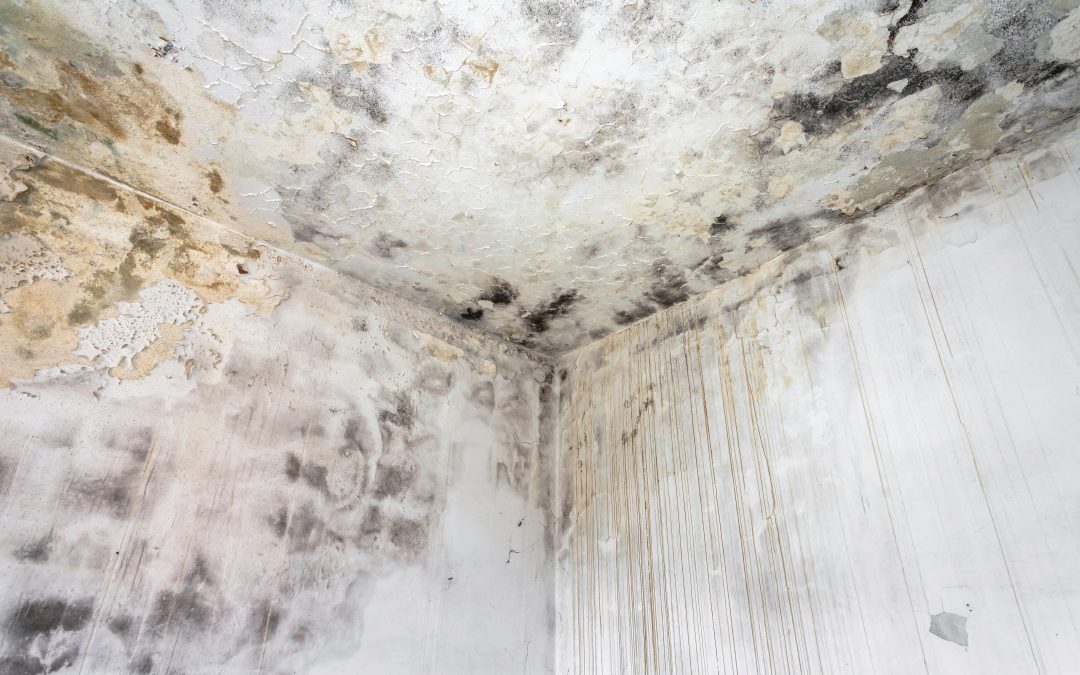
Choosing the Right Basement Waterproofing to Prevent Mold
Basement waterproofing is a crucial step in maintaining the structural integrity and overall health of your home. The basement, being below ground level, is more susceptible to moisture infiltration and water damage. Without proper waterproofing, your basement could become a breeding ground for mold and experience costly damage. In this article, we will delve into the importance of basement waterproofing, discuss different methods, factors to consider, and the value of seeking professional assistance.
Understanding the Importance of Basement Waterproofing
First and foremost, let’s address why basement waterproofing is necessary. Basement moisture can originate from various sources such as groundwater seepage, poor drainage, or cracks in the foundation. When left unattended, this moisture can lead to significant issues, including the growth of mold and mildew.
Mold is a common problem in basements that lack proper waterproofing. Mold spores thrive in damp and humid environments, which make basements an ideal breeding ground. The presence of mold poses health risks to you and your family, including respiratory problems, allergies, and even more severe complications.
Types of Basement Waterproofing Methods
There are different methods available to waterproof your basement, both from the exterior and interior.
Exterior Waterproofing
One effective method is exterior waterproofing, which involves addressing moisture issues from the outside of the basement walls. This method includes excavation and applying a waterproof coating to the exterior walls. Additionally, French drains can be installed to divert water away from the foundation. Another option is the use of an exterior waterproof membrane, which acts as a barrier against water intrusion.
Interior Waterproofing
Interior waterproofing focuses on controlling moisture from the inside of the basement. This method is often more cost-effective and less invasive. It involves applying an interior waterproof coating to the walls, as well as installing drain tiles and a sump pump system to redirect and remove excess water. Crack injections can also be employed to seal any existing cracks in the foundation.
Factors to Consider when Choosing Basement Waterproofing
When deciding on the most suitable basement waterproofing method for your home, several factors come into play.
The severity of the moisture problem
It is essential to identify the source of moisture in your basement before implementing any waterproofing measures. This will help determine the appropriate method to address the issue effectively. Additionally, assessing the extent of damage caused by moisture will guide you in making informed decisions.
Budget and long-term cost-effectiveness
Consider your budget and the long-term cost-effectiveness of the chosen waterproofing solution. While some methods may have higher initial costs, they might provide better long-term benefits and savings. Evaluate the overall cost, including maintenance and repair expenses, over time.
Timeline and disruption to the household
Understand the duration of the waterproofing process and the potential impact on your daily activities during installation. Some methods may require more time and cause more disruption to your household. It’s important to consider these factors and plan accordingly.
Comparing Different Basement Waterproofing Solutions
When comparing basement waterproofing solutions, several aspects should be taken into account.
Effectiveness in preventing mold growth
Each waterproofing method tackles the root cause of moisture differently. Some methods may be more effective in preventing mold growth than others. Consider the specific needs of your basement and choose a solution that directly addresses the underlying issue.
Durability and lifespan of each system
Evaluate the longevity of the chosen waterproofing method. Some solutions may offer extended durability and a longer lifespan, providing ongoing protection for your basement. Additionally, inquire about any warranties or guarantees provided with the chosen solution.
Maintenance requirements and ease of upkeep
Different waterproofing methods come with varying levels of maintenance requirements. Identify any necessary tasks for upkeep and consider the level of involvement needed to ensure the continued effectiveness of the chosen solution.
Seeking Professional Assistance for Basement Waterproofing
Given the importance and complexity of basement waterproofing, it is advisable to seek professional assistance. Waterproofing experts have the knowledge, skills, and experience to assess your specific situation and recommend the most suitable methods.
It is crucial to select a reputable waterproofing contractor to ensure the job is done effectively and efficiently. Research and read customer reviews to gain insight into their previous work. Obtain multiple quotes and consider references from satisfied customers before making your decision.
During the consultation process, ask the right questions to address any concerns or questions you may have. Inquire about the recommended waterproofing method and clarify any doubts. A trustworthy contractor will guide you through the process and provide the necessary information to make an informed decision.
Conclusion
Basement waterproofing is a vital investment in protecting your home from water damage and mold growth. By understanding the importance of waterproofing, exploring different methods, considering key factors, and seeking professional assistance, you can ensure the longevity and health of your basement. Take the necessary steps to keep your basement dry and secure, creating a safe and comfortable living environment for you and your family.
If you would like to learn more about basement waterproofing, visit PermaDry Waterproofing for valuable information and professional services.
Get in Touch
(206) 309-5147
Contact Us
Open Hours
7:30am - 5pm Weekdays
Closed Weekends
Our Office
608 SW 12th Street
Renton, WA 98057
Email Us
